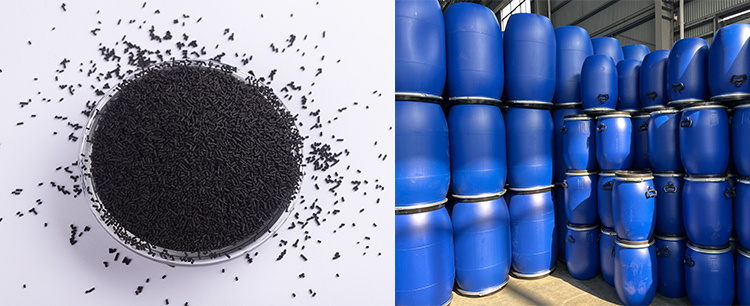The working process of carbon molecular sieve in adsorption towers
The working process of carbon molecular sieves in adsorption towers is based on the principle of Pressure Swing Adsorption (PSA), which achieves gas separation through cyclic operations of pressurized adsorption and depressurized desorption. The specific process includes the following steps: First, dry, oil-free compressed air undergoes pretreatment (dew point ≤ -40°C, oil content ≤ 0.3ppm) before entering the adsorption tower. Carbon molecular sieves, with their microporous structure (pore size 0.28-0.38nm), utilize the characteristic that the diffusion rate of oxygen (molecular diameter 0.28nm) is significantly faster than that of nitrogen (0.3nm). Under pressurized conditions (0.6-0.8MPa), they preferentially adsorb oxygen, carbon dioxide, and moisture, while the unadsorbed nitrogen is discharged from the upper part of the adsorption tower and collected in a nitrogen storage tank . When the carbon molecular sieves in the adsorption tower reach adsorption saturation, the system automatically switches to the pressure equalization stage. Pressurized gas in this tower is injected into another regenerated adsorption tower from both upper and lower directions, balancing the pressure between the two towers to recover energy and reduce molecular sieve impact . Subsequently, entering the desorption stage, the saturated tower is depressurized to atmospheric pressure (or vacuum regeneration), allowing adsorbed impurities such as oxygen to desorb from the molecular sieve micropores and be discharged into the atmosphere, completing molecular sieve regeneration. In practical applications, two adsorption towers (A and B) are usually used to work alternately. The PLC programmable controller automatically controls cyclic processes such as adsorption, pressure equalization, desorption, and purging (a single cycle includes adsorption for 45-90 seconds, pressure equalization for 1-3 seconds, etc.) to achieve continuous and stable nitrogen output .

Related News

TOP



